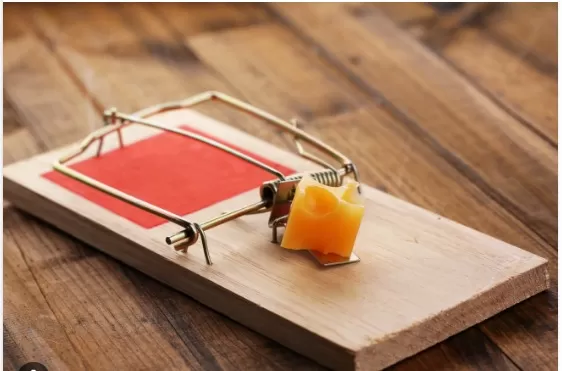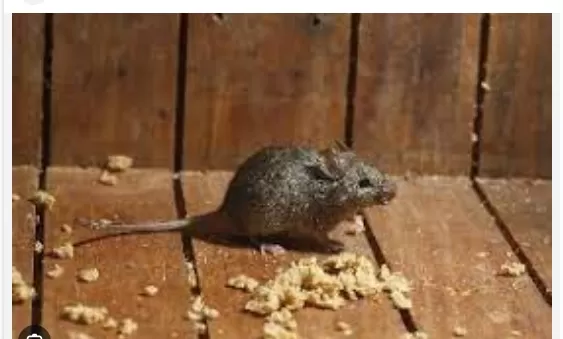DIY Guide: Rodent-Proofing Your Home. In order to achieve the best possible outcomes when it comes to do-it-yourself pest control, it is crucial to be proactive and tackle critters while they are still in your yard. By taking early action and addressing pest issues at the source, you can prevent them from infiltrating your living space and minimize the need for more extensive measures later on.
Instead of waiting for pests to enter your home, focusing on pest control in your yard sets the stage for a more successful and efficient approach to keeping unwanted critters at bay. By implementing preventive measures and employing suitable pest control techniques in your outdoor areas, you create a barrier that acts as the first line of defense against potential infestations. This proactive approach not only ensures a healthier and safer living environment but also saves you time, effort, and potentially costly extermination expenses down the line. Remember, the key to effective DIY pest control lies in nipping the problem in the bud and stopping critters in their tracks before they have a chance to become a more significant nuisance inside your home.
Rodent Prevention Tips for a Rodent-Free Yard

Secure Your Yard: Start by sealing all garbage in closed metal trash cans to prevent rodents from accessing a potential food source.
Remove any items in your yard that can provide shelter for rodents, ensuring that your property and fence line are free of debris and clutter. Keeping your landscaping minimal will help eliminate hiding spots for rodents.
Tidy Semi-Outdoor Storage Areas: Avoid turning your garages and sheds into rodent homes.
A cluttered garage can attract a large number of rodents, so consider decluttering and organizing these spaces. It’s time for that yard sale if you’ve been holding onto items for too long.
Not only will decluttering keep rodents away from your home, but it will also protect your stored belongings from damage and contamination.
Innovative Garden Decorations: If you have a garden or prefer ground cover, employ modern decoys to deter rodents effectively.
Avoid relying on static plastic owls and opt for dynamic alternatives like the Prowler Owl. This life-size decoy, made of lightweight Tyvek material, moves and floats in the breeze, creating the illusion of a predator.
Another option is Irri-Tape, a two-inch wide holographic strip that, to rodents, resembles the sheen of a snake or the eyes of an owl, effectively scaring them away.
By implementing these rodent prevention strategies, you can create a rodent-free yard that is both aesthetically pleasing and safe from potential infestations.
Rodent-Proofing Tips to Safeguard Your Home

Sealing Entry Points: Even with a clean yard, open spaces can attract critters seeking warmth and food in your home.
Thoroughly cover and Seal any cracks and holes in your house, including the smallest gaps. Pay close attention to gaps around pipes, as leaks can widen existing holes, providing easy access for rodents.
Copper wool is the best material to use for covering and filling these openings, as rodents are less likely to chew through it compared to foams and caulks. Alternatively, you can use aluminum window screens or hardware cloth.
Allowing Ventilation: While it’s important to seal entry points, avoid blocking all holes in your house, as proper ventilation is necessary.
Use aluminum window screens over openings such as windows, door sweeps, vents, and chimneys to allow your home to “breathe” while keeping rodents out.
Sonic and Ultrasonic Repellants: Consider using sonic and ultrasonic repellants as an additional deterrent.
These devices emit sounds that are inaudible to humans but can be heard by pests, supposedly keeping them away. Opinions on their effectiveness vary among pest control professionals.
If you decide to try them, consider investing in a professional-grade machine rather than a cheaper version from a hardware store. The professional-grade machines, costing around $95, have greater coverage and are more likely to yield results.
Place the repellant in your basement, as rats and mice are commonly found in that area.
Proper Food Storage: Prevent rodent attraction by ensuring no food is left out, and store kitchen food items above counter level in tightly sealed containers.
Don’t forget about pet food as well. If your pet doesn’t finish its meal, avoid leaving the food out overnight in their bowl.
Rodents are nocturnal creatures, and any leftover pet food becomes an enticing buffet for them.
By implementing these rodent-proofing measures, you can effectively safeguard your home from unwanted intruders and potential infestations.
Dealing with Rodent Infestation: When to Seek Professional Help

Discovering rat or mouse droppings in your home doesn’t mean you’ve failed.
Rodents possess remarkable abilities to infiltrate places they shouldn’t. If you’re uncertain about the best course of action to remove them from your house or prefer not to handle the ethical dilemma of killing them versus trap-and-release methods, don’t hesitate to call a professional.
The longer rodents reside in your home, the more droppings they’ll leave behind, potentially carrying diseases, and the greater the damage they are likely to cause. Seeking professional assistance promptly can help mitigate these risks.
*The information is for reference only.